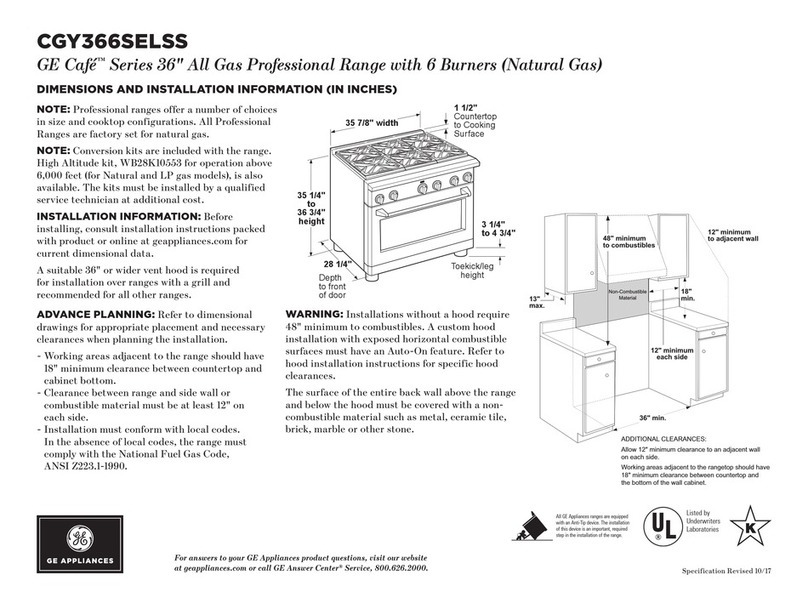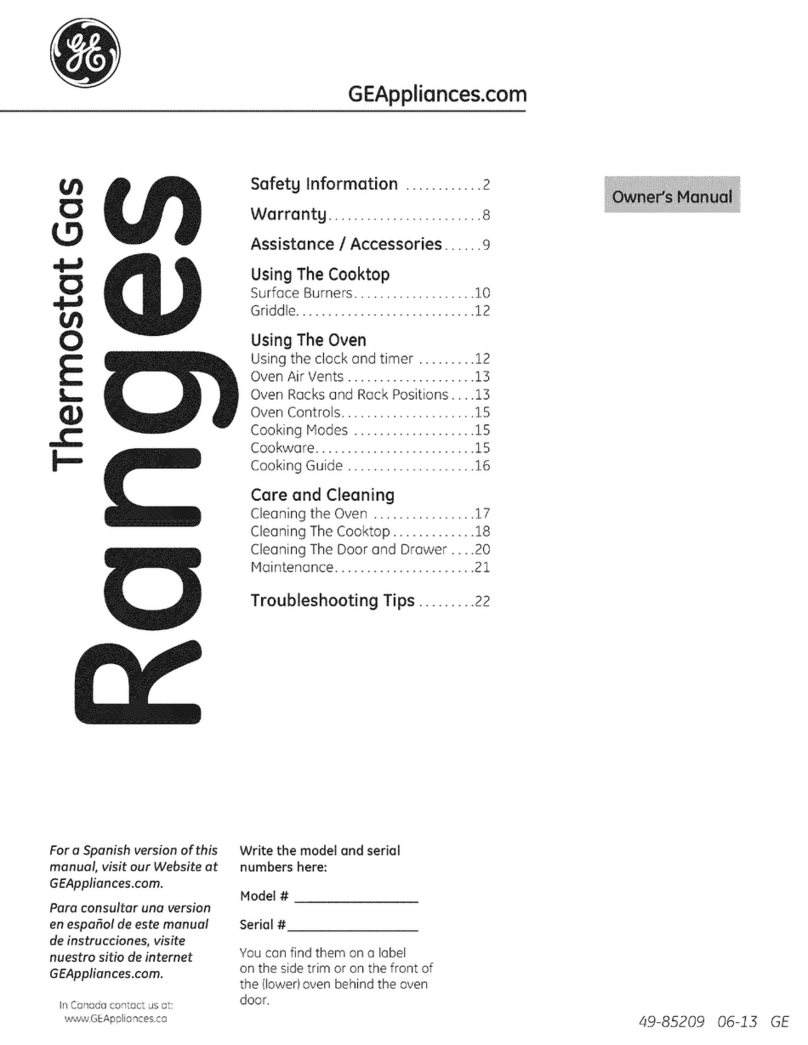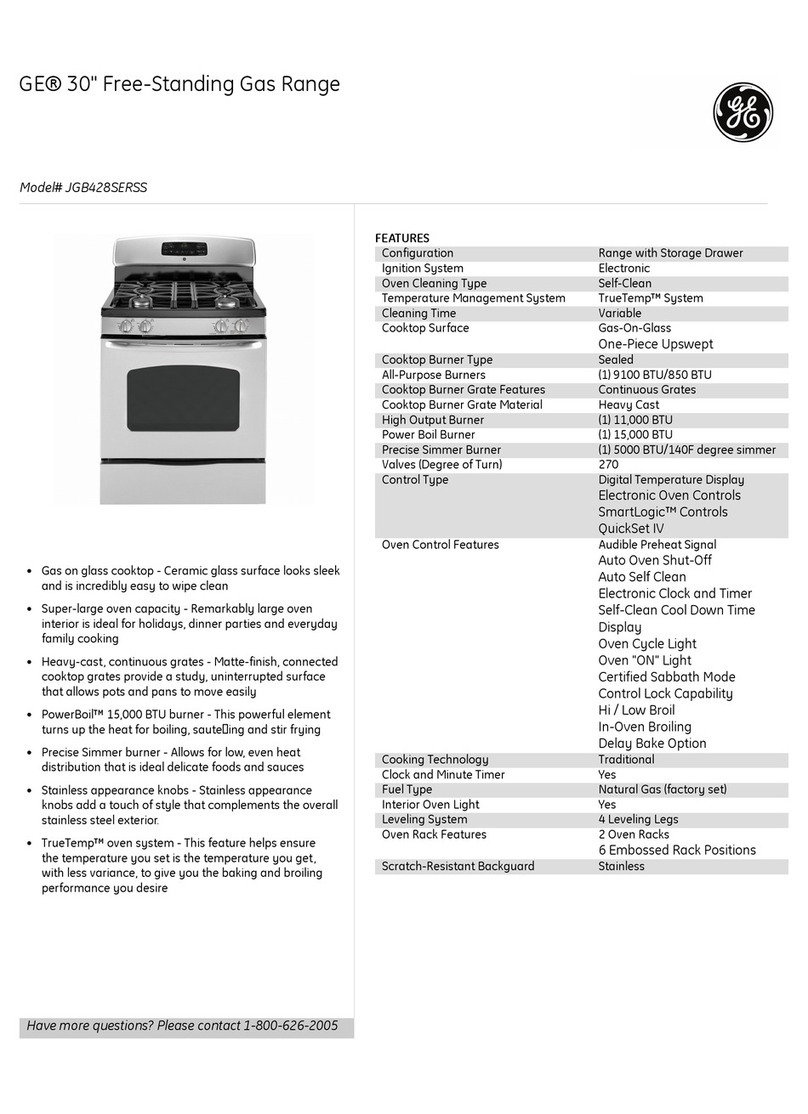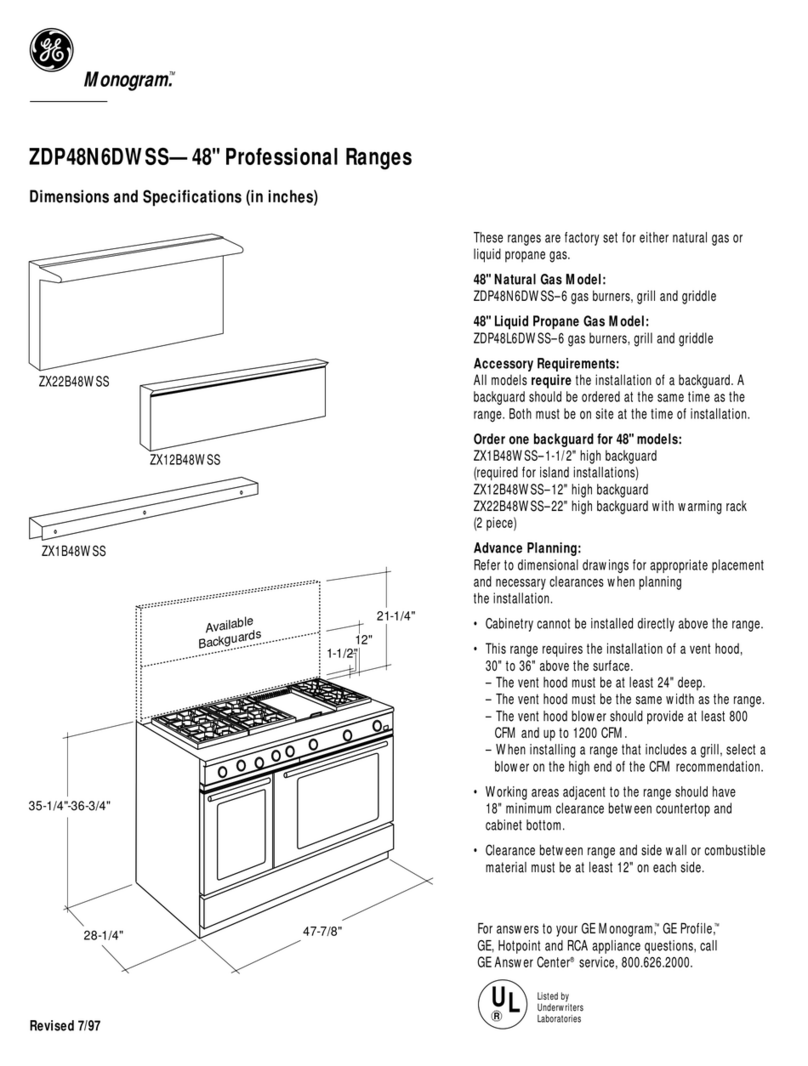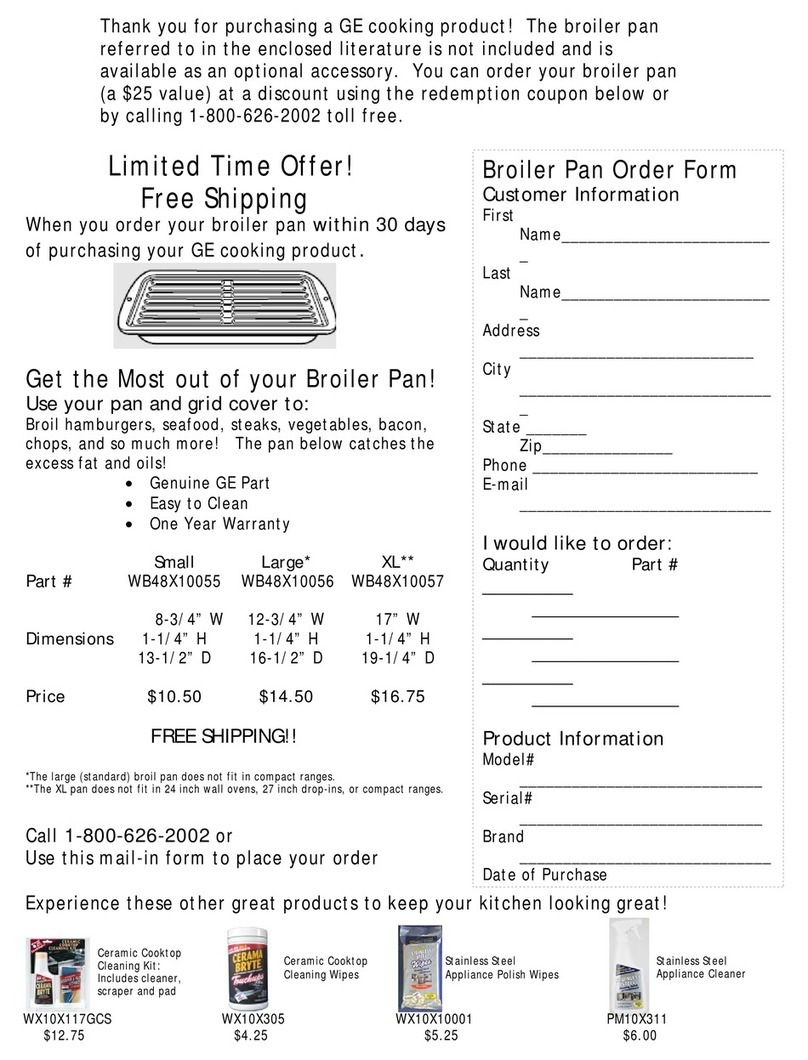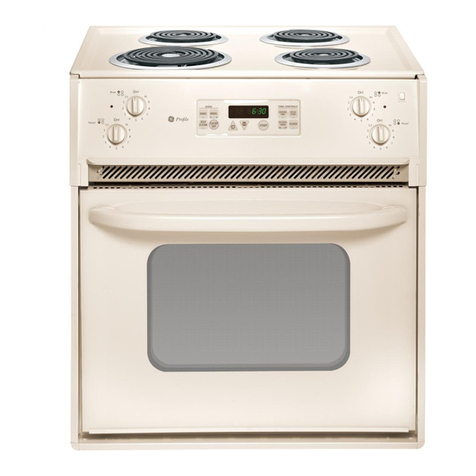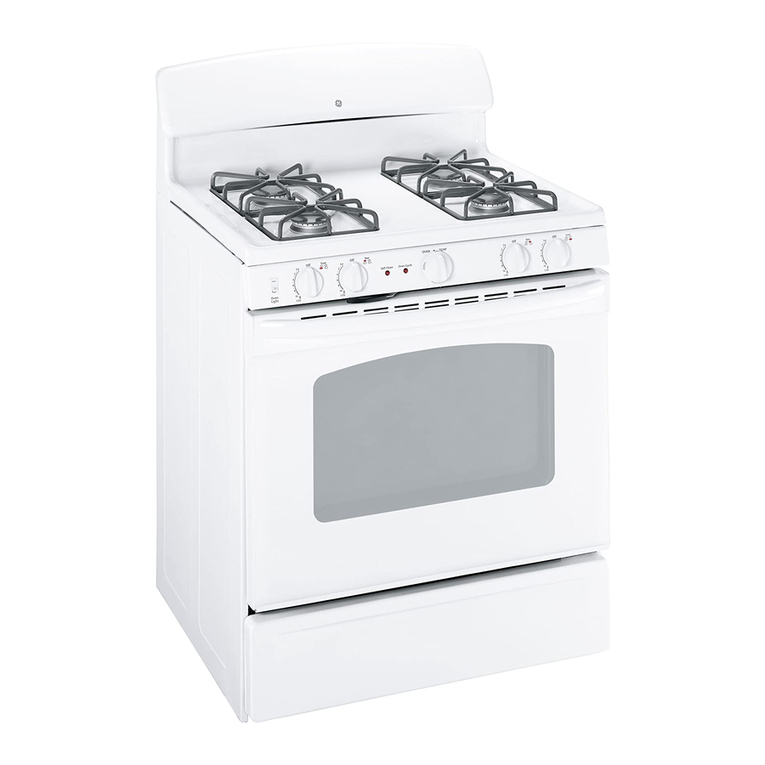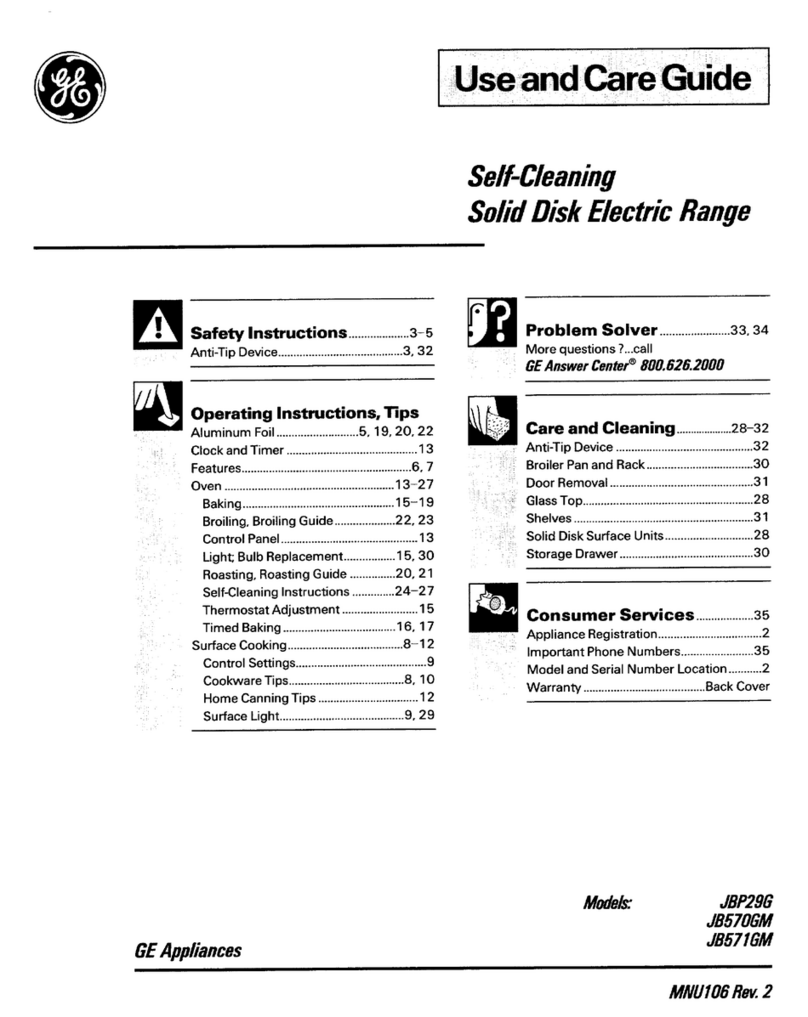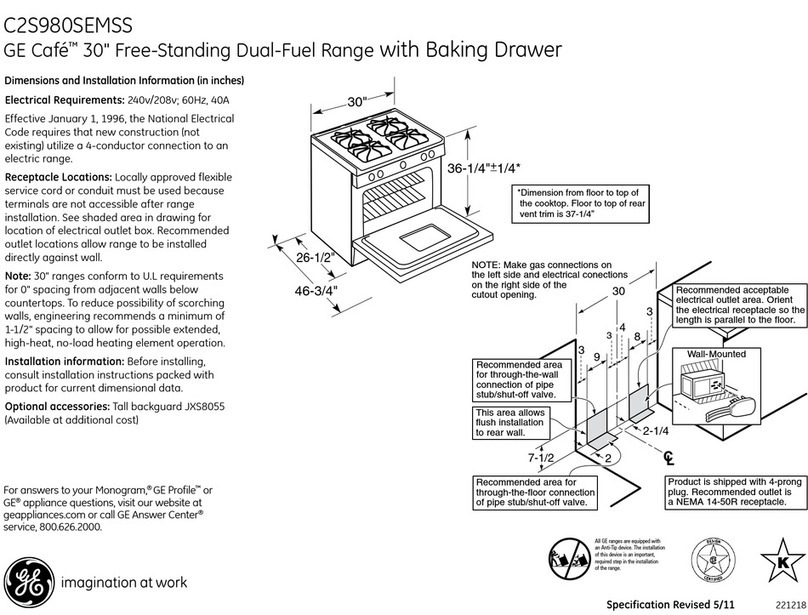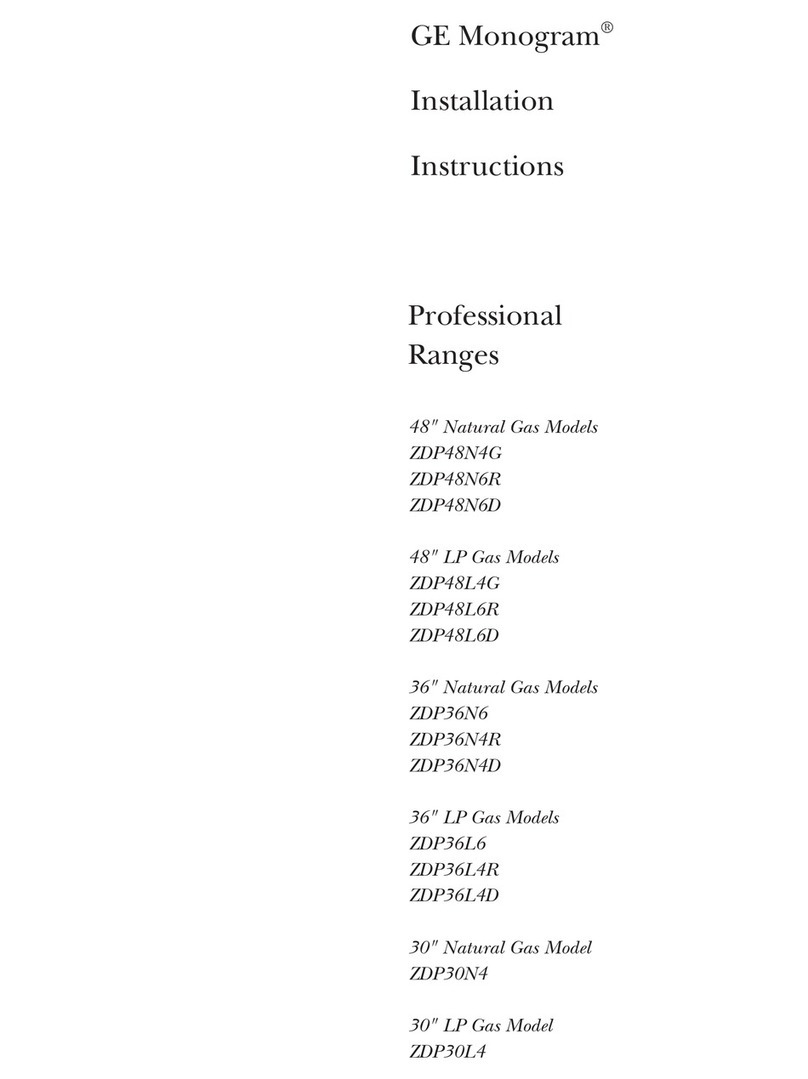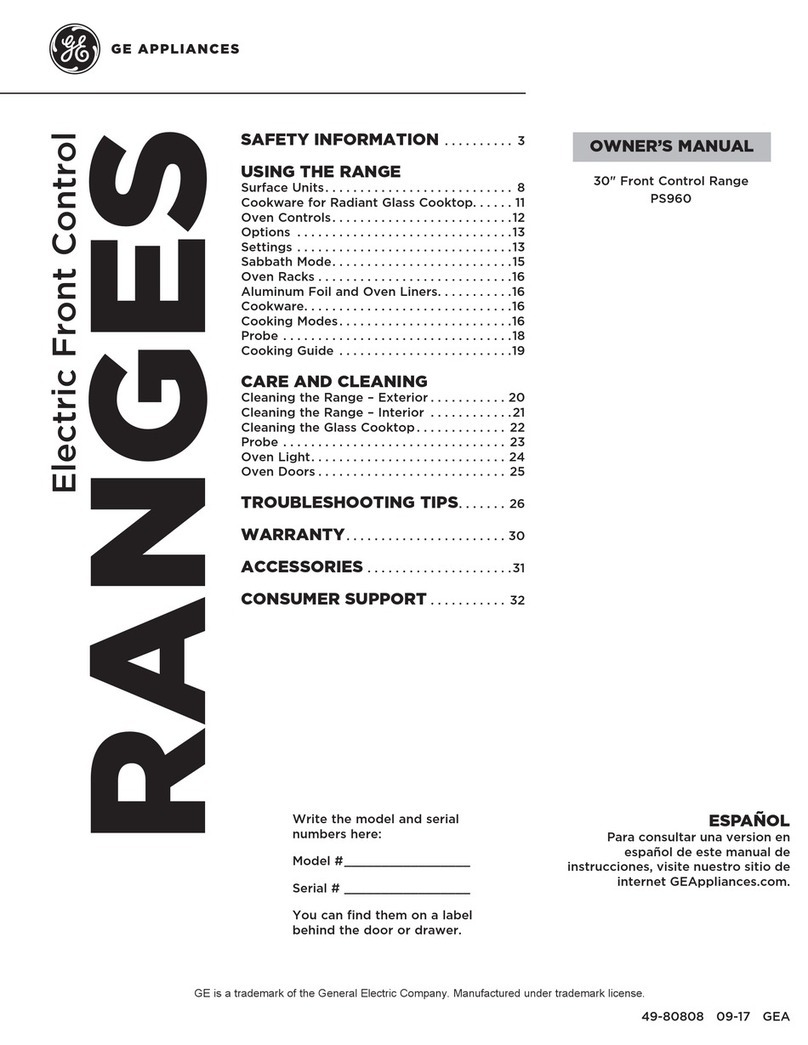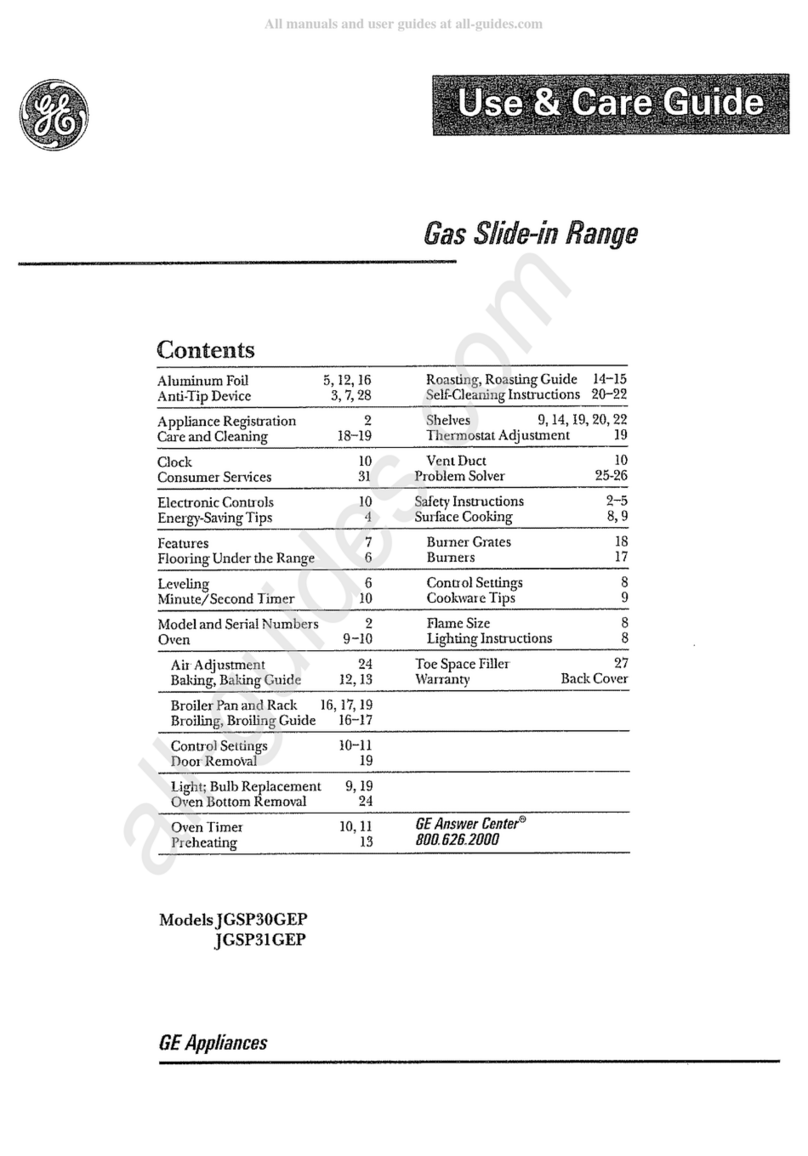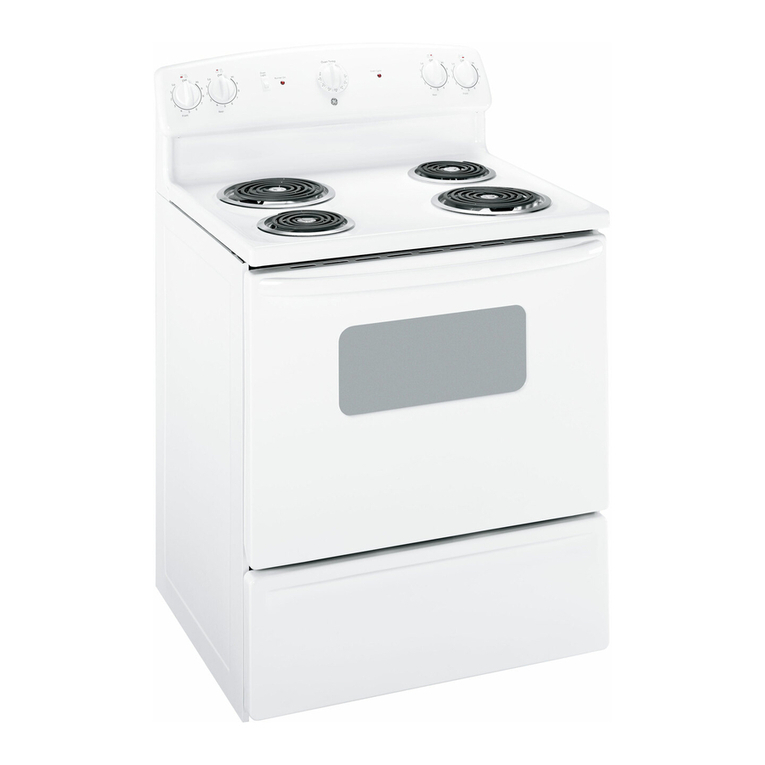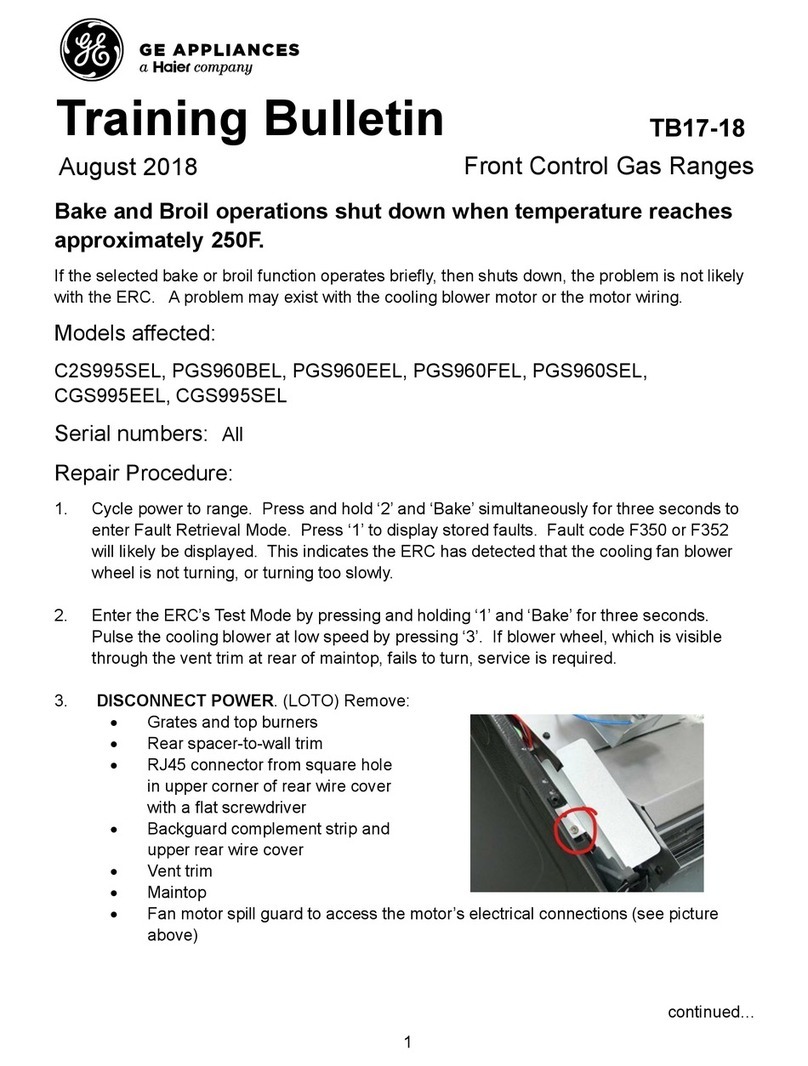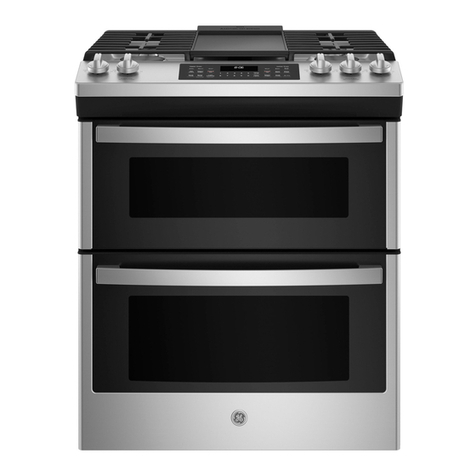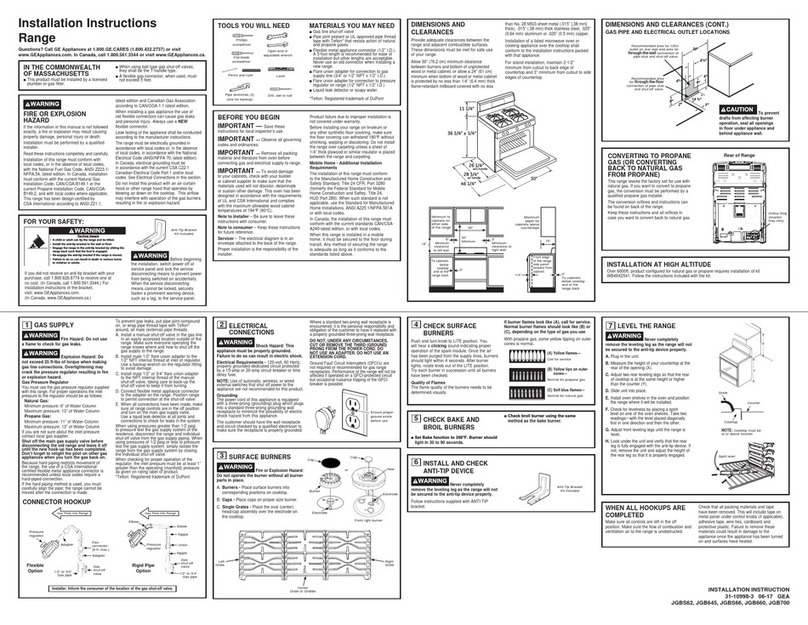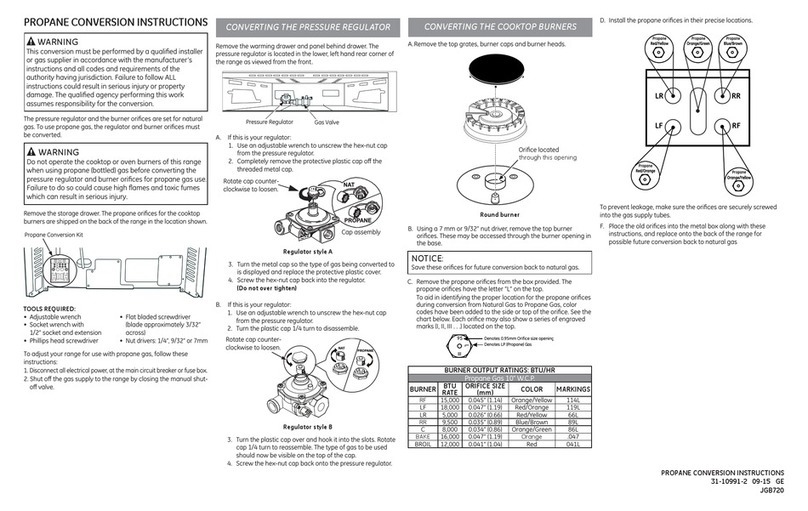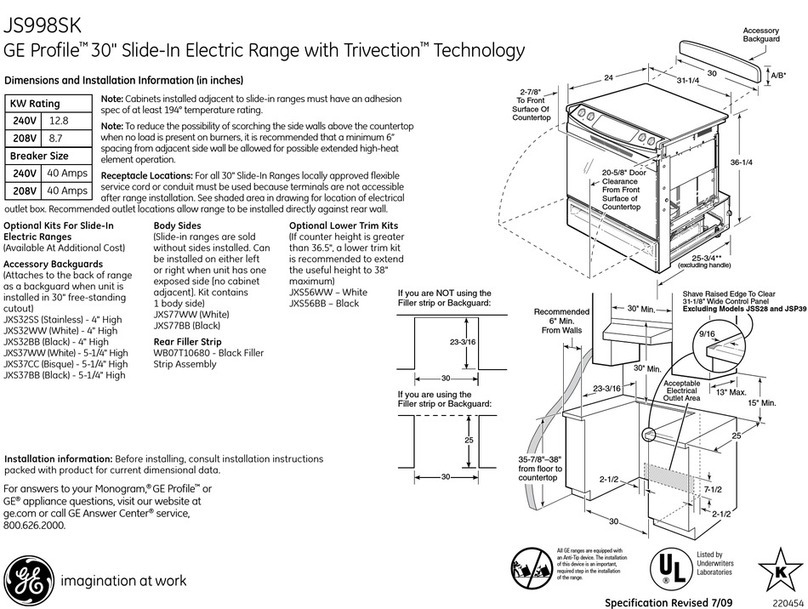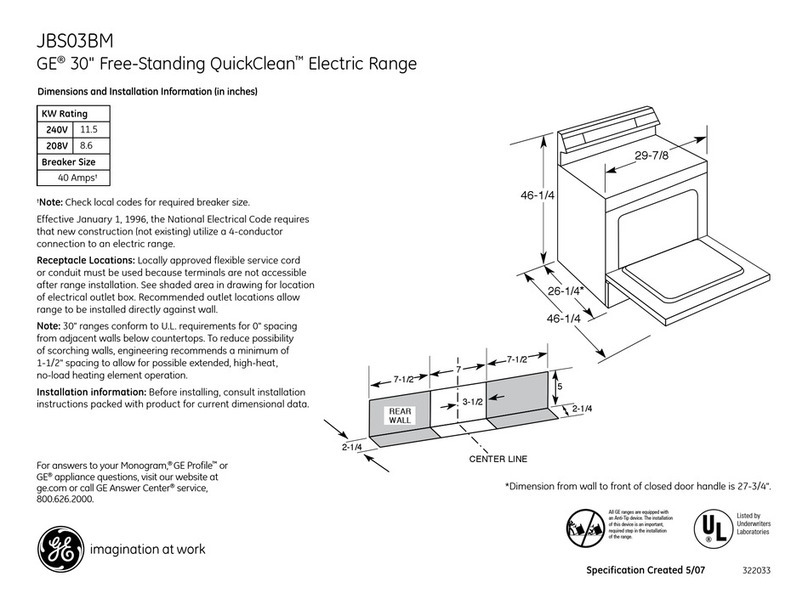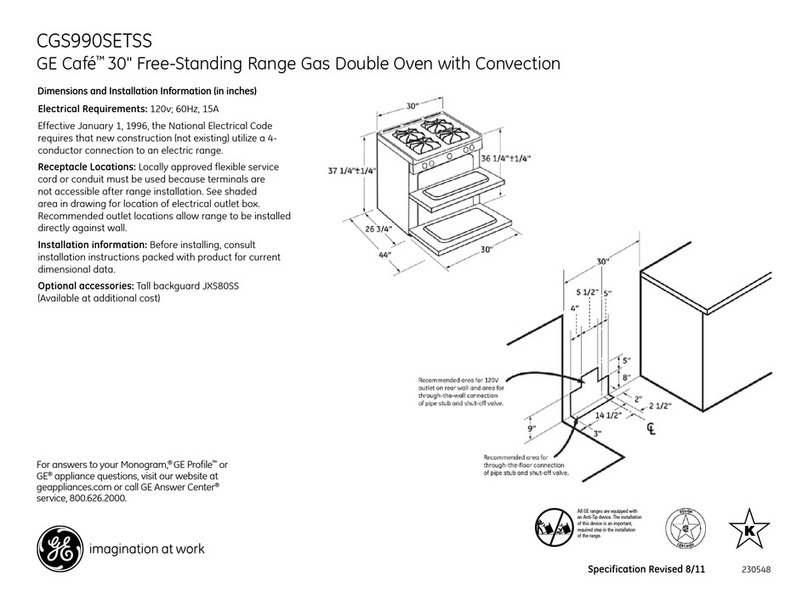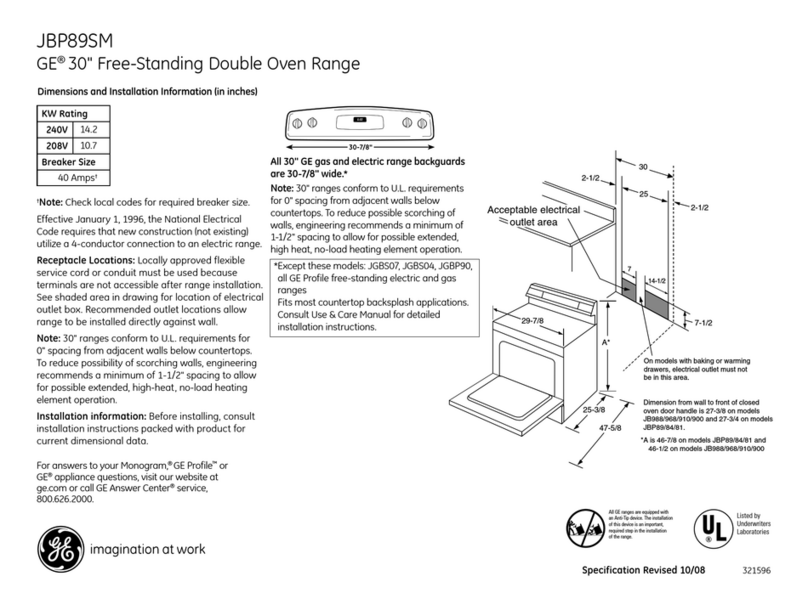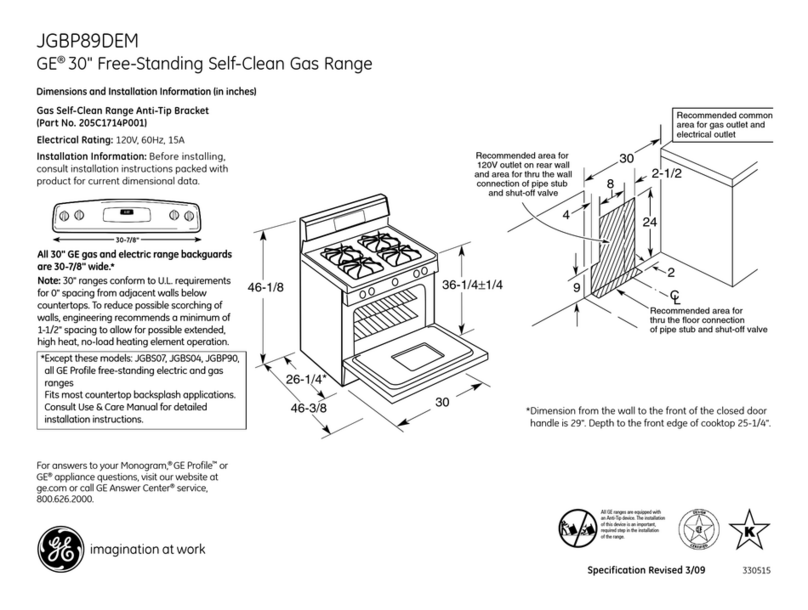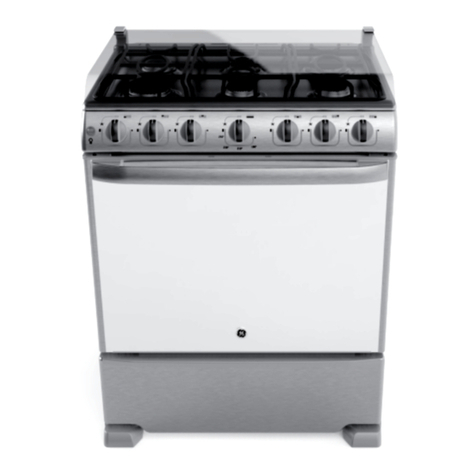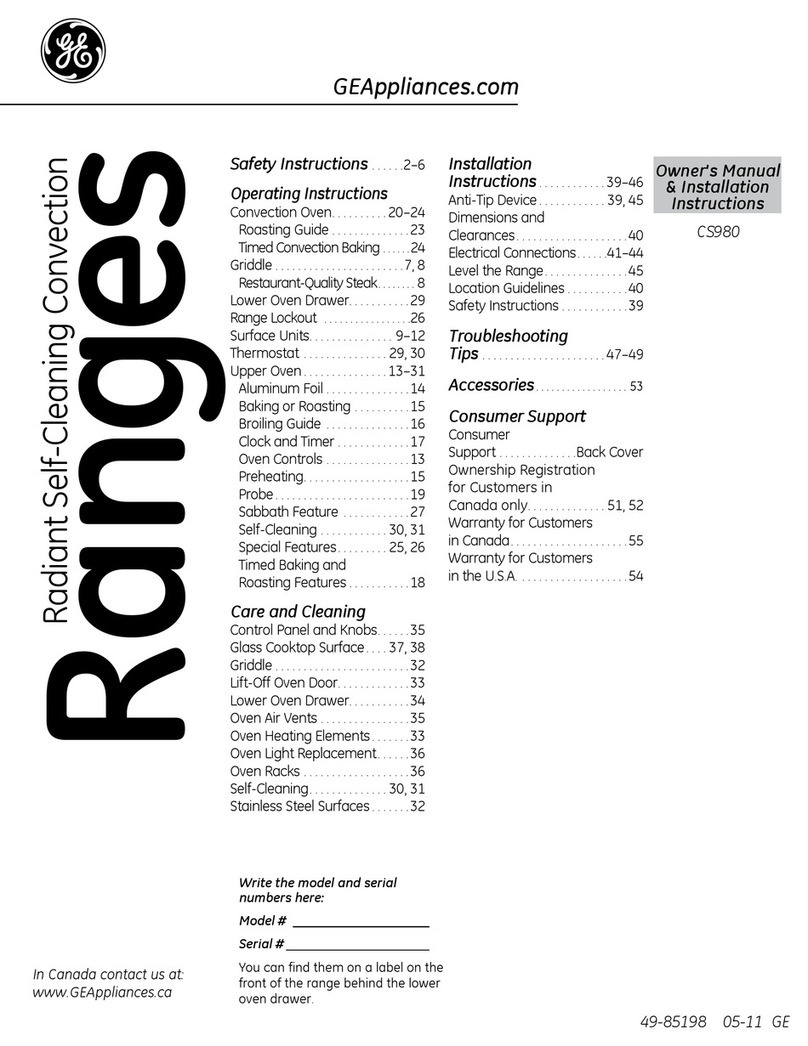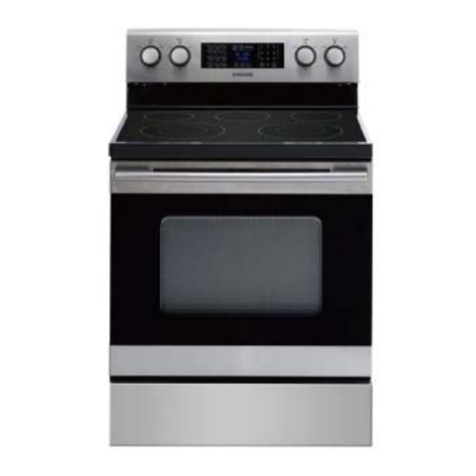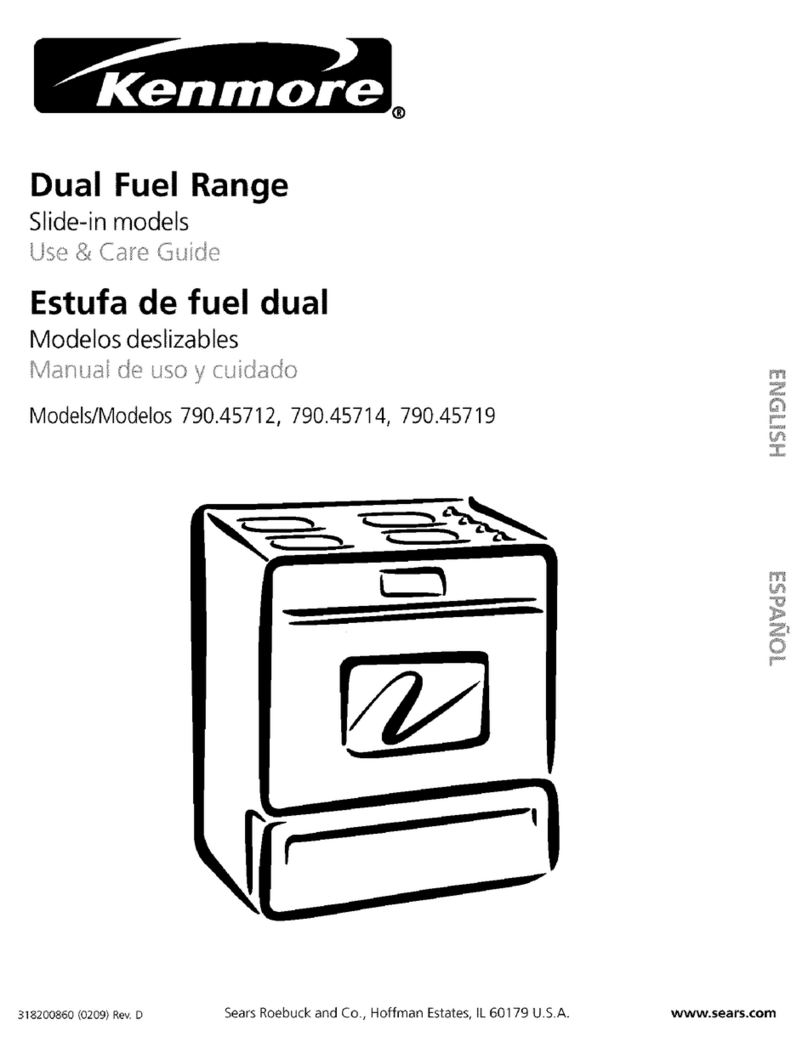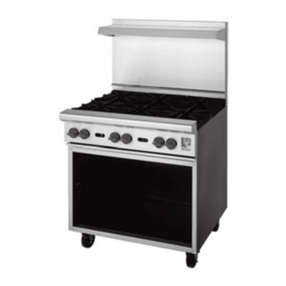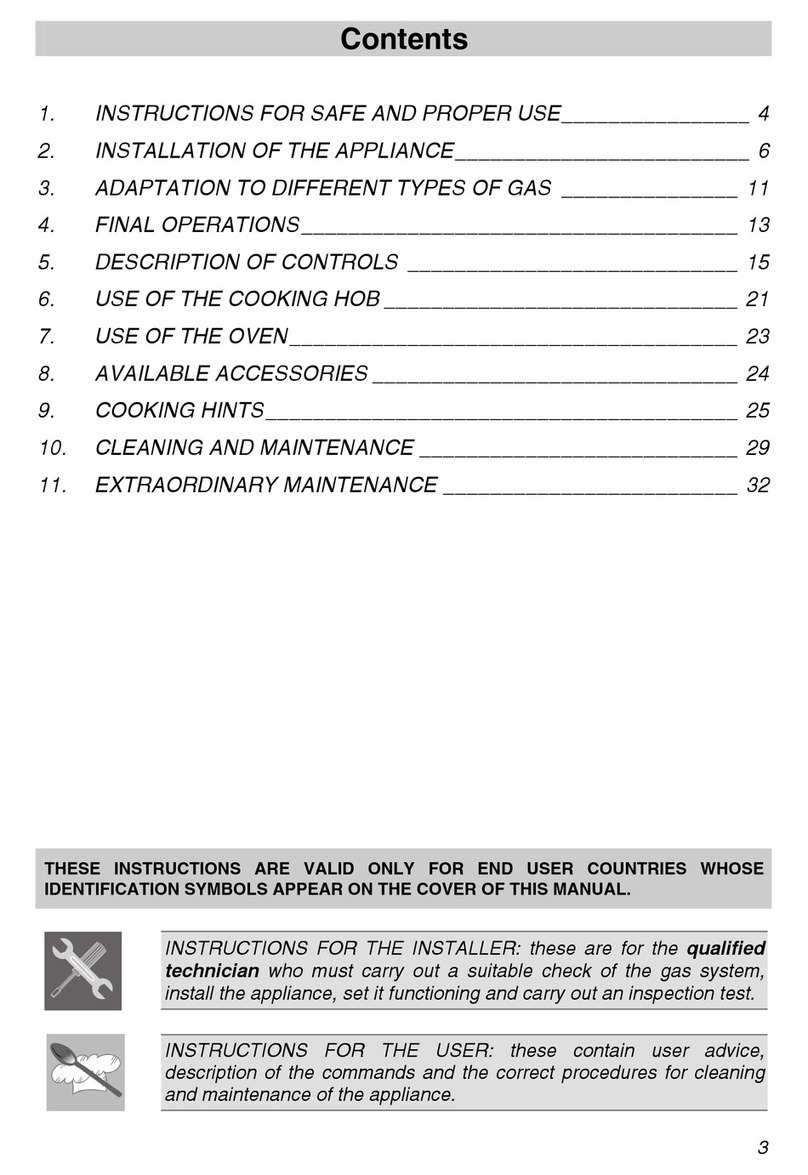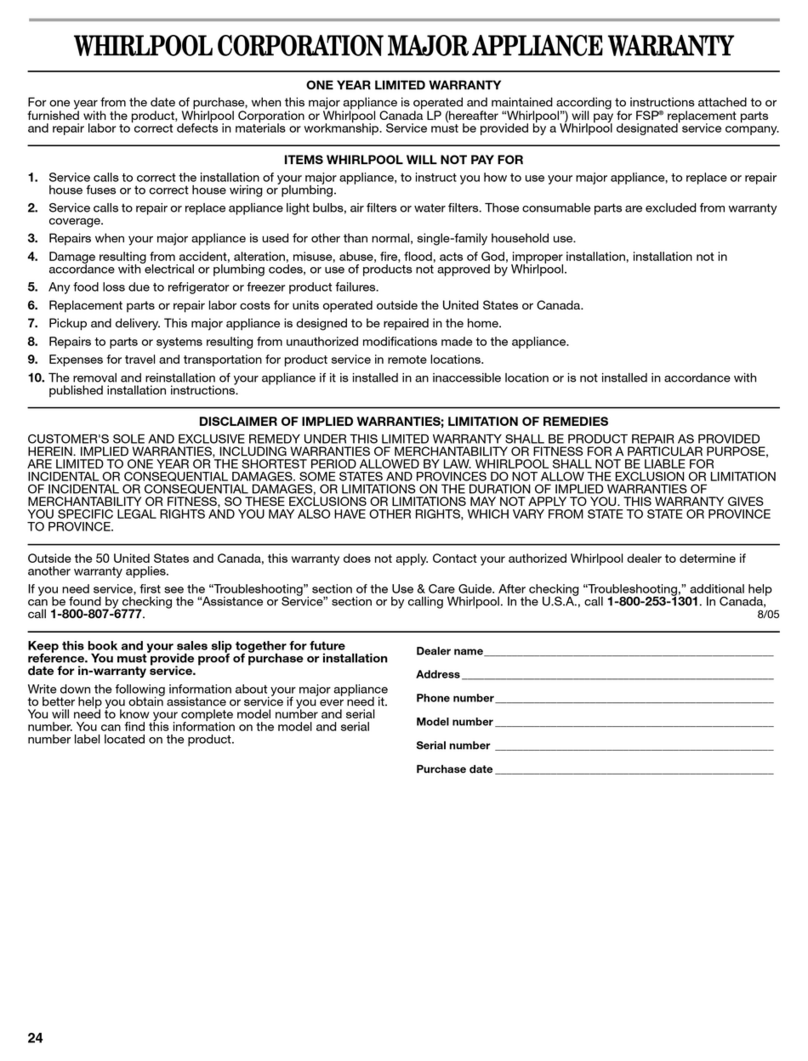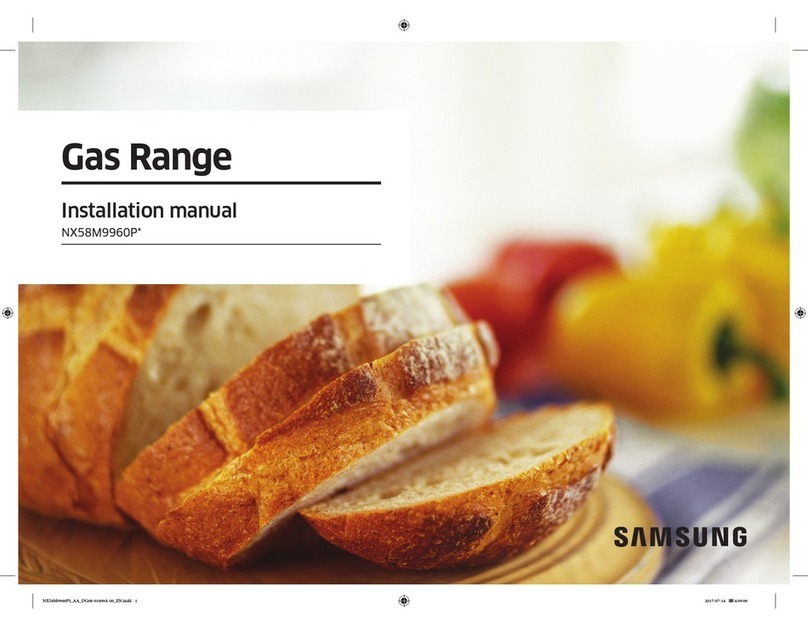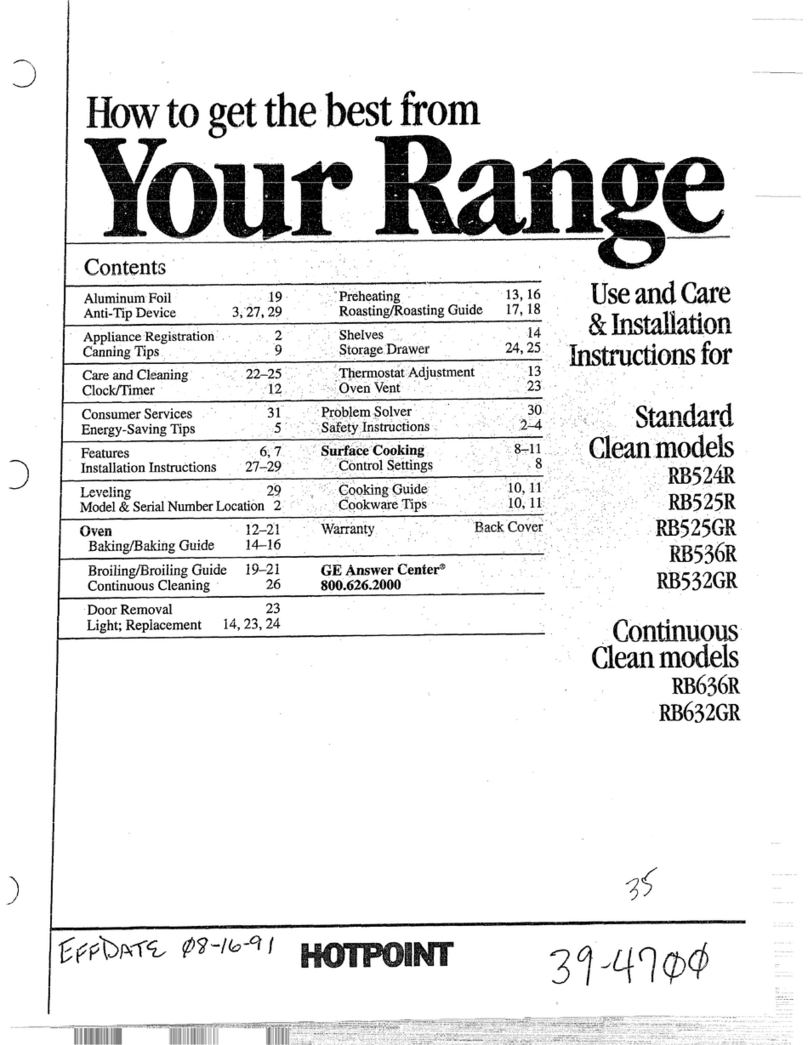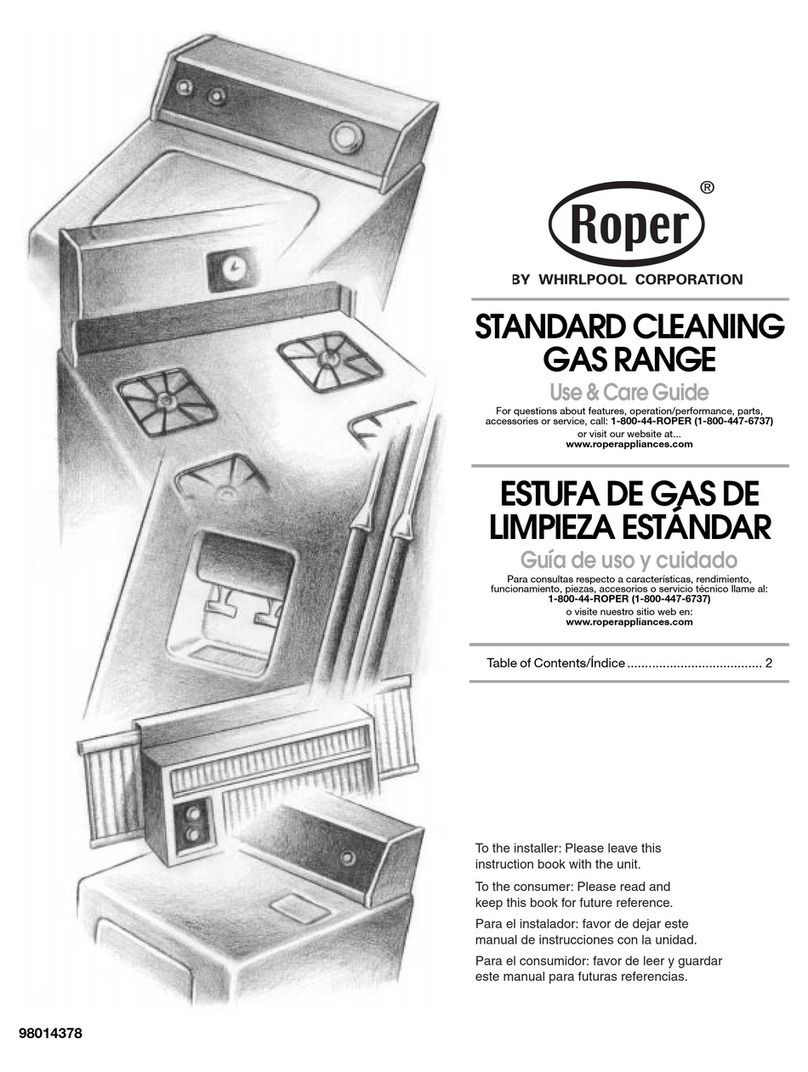IMPORTANT INSTRUCTIOt
(continued)
• Do not cook on a broken glass cooktop.
Spillovers or cleaning solution may penetrate a
broken cooktop and create a risk of electrical
shock. Contact a qualified technician immediately
should your cooktop become broken.
°:(2_ean the cooktop with caution. If a wet
:;p,_ !_,eor cloth is used to wipe spills on a hot
,'' _.T_ _,area, be careful to avoiosteam burn.
_.,_0,_cleansers can produce noxious fumes if
:,pi)lied to a hot surface.
° _:,.:,_re when touching the cooktop. The
._'!a'<:,cufface of the cooktop will retain heat after
_i,,: )mrols have been turned off•
" 90 i_u_tteuch the surface units. These surfaces
_m_?b;:b,ot enough to bum even though they
>•, lark in color• During and after use, do not
__;ud'_.,_ict clothing or other flammable materials
,__ _act the surface units or areas nearby the surface
:;:__s:a_low sufficient time for cooling, first.
%t, _fiallbhot surfaces include the cooktop and
_.":as facing the cooktop, the oven vent opening
und s_dacc-s near the opening, crevices around the
o_,e_ door. the edges of the door window and
_etabrimparts above the door• Remember: The
_side surface of the oven may be hot when the
doo: i_ opened.
,_v • follow the directions
° , _en cooking pork,
_:xa_tly and always cook the meat to an internal
er,_pemture of at least 170°F. This assures that, in
rhe _emote possibility that trichina may be present
in the meat, it will be killed and the meat will be
,mfe to eat.
•:_*'v_rbroiling, always take the broiler pan
>_,,_.of the range and clean it. Leftovergrease
i_ the broiler pan can catch fire next time you
;_scl hepan.
OVe]t_.
• Stand away from range when opening oven
!1,._:Hot air or steam which escapes can cause
a_,rns _ohands, face and/or eyes.
oDo_'_,heat unopened food containers. Pressure
cot_idbuild up and the container could burst,
caush_gan injury.
Keep oven vent duct unobstructed.
Kt,ep oven free from grease buildup.
oP_ace oven shelf in desired position while
o-win is cool. If shelves must be handled when
he,;. d',>not let pot holder contact heating units
in _he oven_
, Pulling out shelf to the shelf stop is a
convenience in lifting heavy foods. It is also a
precaution against burns from touching hot
surfaces of the door or oven walls.
• When using cooking or roasting bags in oven,
follow the manufacturer's directions•
• Do not use your oven to dry newspapers. If
overheated, they can catch fire.
• Do not use ow,_nfor a storage area. Items stored
in an oven can ignite.
• Do not leave paper products, eookin_ utensils,
or food in the oven when not in use.
Self-Cleaning Oven
.Do not. clean the door gasket. The door gasket is
essential for a good seal. Care should be taken not
to rub, damage or move the gasket.
•Do not use oven cleaners. No commercial oven
cleaner or oven liner protective coating of any kind
should be used in or around any part of the oven,
• Clean only parts listed in this Use and
Care Book.
.Before self-cleaning the oven, remove the
broiler pan and other cookware.
• Do not use aluminum foil to line oven
bottoms, except as suggested in manual.
Improper installation of these liners may result
in a risk of electric shock or fire,
°Be sure to wipe up excess spillage before
starting the self-cleaning operation.
• If the self-cleaning mode malfunctions, turn off
and disconnect the power supply. Have serviced
by a qualified technician.
Cooktop and Radiant Surface Units
.Use proper pan size--This appliance has four
surface units. Select cookware having flat bottoms
large enough to cover the selected surface unit.
The use of undersized cookware will expose a
portion of the heating element to direct contact
and may result in ignition of clothing. Proper
relationship of cookware to surface units will also
improve efficiency.
°Never leave the surface units unattended at
high heat settings. Boilover causes smoking and
greasy spillovers that may catch on fire.
